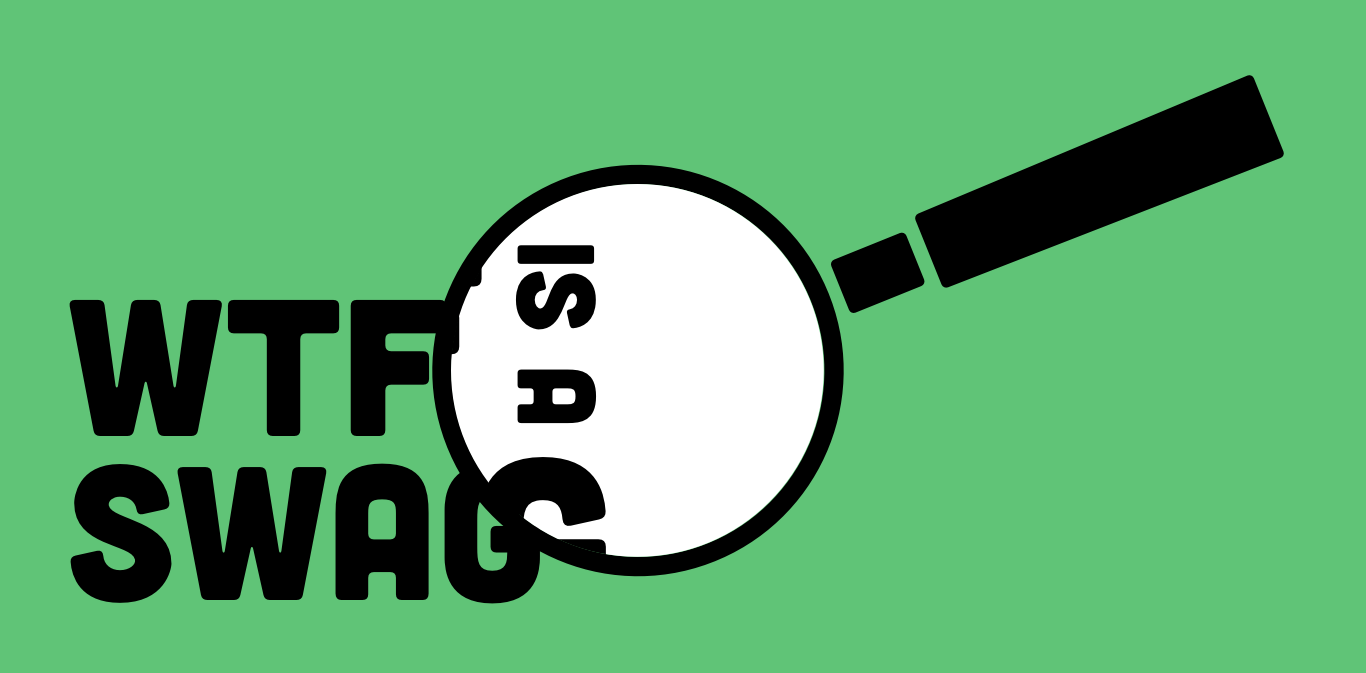
If you’re taking the leap into hiring an agency for development or design work for the first time, you probably have no clue what costs to expect. While a seasoned developer or manager who has worked with freelancers or outsourcing before might be able to approach an agency with a ballpark number to hit, often potential clients we speak with aren’t sure if their project should cost $30,000, $300,000, or much more.
Of course, you don’t want to waste weeks of your time with back and forth if budgets don’t align. That’s why we employ SWAG early in our conversations with potential clients.
No, I don’t mean that our impeccable style and charm is irresistible, but rather that we depend on the extremely helpful:
Scientific
Wild
Ass
Guess
We could call this a “ballpark estimate” or a guesstimate, but we like this term better. (It makes for better GIFs.) A thought-out SWAG helps set the expectations early in our communication and make sure everyone is on the same page before going forward. The last thing you want as a client is to be blindsided with a number much larger than you expected after you’ve settled on your agency of choice.
How do we calculate our SWAG?
There’s a method behind the SWAG – scientific is in the name, after all. Here are just a few questions we ask both internally and with our potential partners that affect our initial project development SWAG:
Can we compare this project to anything we’ve done before?
We’ve been in the business for a while, so this may be our most helpful factor in estimating projects. A wide range of partners allows us to draw experiences from similar industries or challenges. This is the first step in calculating custom development costs. If an ecommerce company approaches us with a goal of moving away from WooCommerce or integrating with ShipStation, we’ve done it before and will know what challenges and timeline to expect. Or if you’re looking for Ruby on Rails dev for your healthcare company, we can reference HIPAA compliance hurdles we’ve jumped before.
Once we identify similar projects, we cover a few additional questions:
How well defined are your project goals? Are you still in discovery mode?
Some partnerships are formed while the project is still finding its legs. Others begin with clear short and long term goals established long before we came in. The second type will result in a lower project cost. When a project shifts scope during our partnership, releases will take longer and timelines will extend to meet new expectations.
Will we need to integrate with any 3rd-party APIs? If so, do they each have accessible documentation we can reference?
APIs simplify connections between any existing 3rd party tools and the custom applications we build. These 3rd party tools might be billing, scheduling, or collaborating applications that we can apply to your project instead of building 100% from scratch. When we can integrate with 3rd party tools that are up to date with accessible documentation, a project is simplified.
Is this an internal application or will the work be public-facing?
Internal applications tend to involve shorter release cycles and more iteration. This can cut down on hand off time between our team and yours. Public-facing applications leave less room for error and require more extensive quality assurance testing.
How many user roles or personas are we building for?
If we’re building an internal application for communication or data collection, the user role is clear and well defined as a select group of employees. But if an application is for potential customers – including several different personas, then those experiences will need to be factored into the development timeline.
Will our team be able to steer the design phase, or will a client-side committee need to approve changes?
Design is a bit trickier to call “done” than development. Often the end goal with a development feature is simply that it functions. But design leaves much more room for opinion. The quickest (and least expensive) design changes are made when trust is given to the agency. Of course, you want the design agency you hire to follow any brand standards that are in place. But if the external design team is faced with dozens of approvals before moving forward with changes, time and costs will go up.
Are we partnering alongside an internal team for development or design?
Over dozens of web application development partnerships, we’ve seen historically that higher levels of collaboration between an agency team and an internal team means more overhead. This is due to lag times in communication and conflicting opinions inevitable in a larger team. If you’re looking to lower your costs and decrease turnaround time, try to limit decision by committee and involve only the key stakeholders in approvals and revisions.
When you start to field agencies and receive estimates for your web development project, the questions above will give you a better guide to how that number was created, and what information you can provide to receive the most accurate estimate and timeline.
Tags: